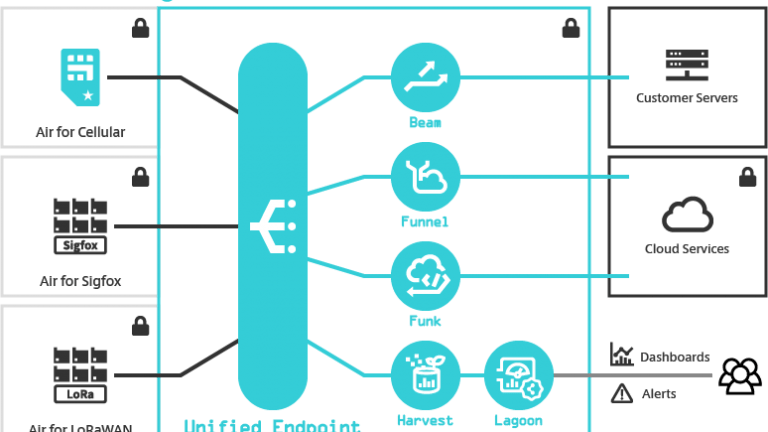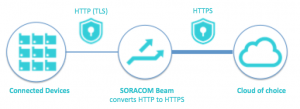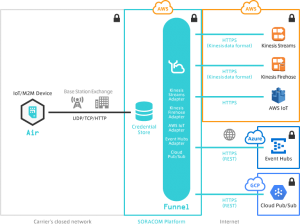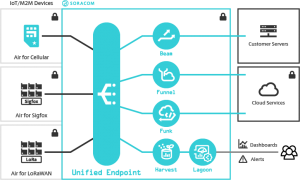Simplify your IoT Project with Unified Endpoint!

What is a Unified Endpoint?
To explain what Unified Endpoint is, you need to briefly understand some of the Soracom services associated with it. We’ve released three services for transferring and storing data from IoT devices to the cloud and servers.
While these all transmit and store data somewhere, they are unique characteristics that set them apart.
SORACOM Beam allows you to mix various incoming and outgoing protocols. Plus, it can specify endpoints other than cloud services such as your application server. However, this comes at the cost of additional configuration.

Comparatively, SORACOM Funnel allows users to transfer data to specific cloud services and SaaS. It takes care of the forwarding protocol configuration so that you only have to specify the forwarding destination and credentials for you to start transferring data.

Lastly, SORACOM Harvest stores the data that is collected from the devices and generates charts and graphs that can be accessed directly from the User Console and on the dashboard service SORACOM Lagoon.

Since these three services are independent from one another, users must specify different endpoints (forwarding destinations) for each use. This is where Unified Endpoint comes in.
The Benefits of Unified Endpoint

With Unified Endpoint, users can switch the data transmission service from Beam, Funnel, and Harvest by changing the endpoint set on the device from the conventional endpoint to uni.soracom.io.
This can be done from the user console or API, eliminating the need to change device settings that was required when using Cellular.
In addition to simply switching destinations, Unified Endpoint can send messages to these three services in a single request. When you want to try SORACOM Lagoon while using Beam, or when you switch the device used for Harvest to Funnel, it is possible to send data to both and have a transition period, so that it can be completed remotely.
In this case, since it is sent to multiple endpoints, what happens to the response? With this new feature, multiple response formats to be selected. For instance, you can send the response to Beam while sending it to Beam and Harvest.
Also, as a new feature unique to Unified Endpoint, you can now customize the response. If it is not convenient to return a specific response due to device restrictions, you can return a predetermined response for success or failure if it is not convenient.
Communication and Protocols that can use Unified Endpoint
Unified Endpoint is automatically applied to the following devices: Each behavior is compatible.
- SORACOM Air for LoRaWAN
- SORACOM Air for Sigfox
- SORACOM Inventory (Lwm2m change notification function)
- SORACOM LTE-M Button for Enterprise
It’s also available for the following protocols:
- SORACOM Air for Cellular (HTTP, TCP, UDP, SMS, USSD)
- HTTP supports only the POST method.
- It does not support Beam’s Website entry point.
- It does not support TCP transmission format “SORACOM Binary Format V1”.
Currently, Unified Endpoint is not available for the following protocols:
- SORACOM Air IoT SIM Card for Cellular (MQTT)
- SORACOM Inventory HTTP endpoint
Time to Experiment!
Unified Endpoint is not just an endpoint, but an exciting new feature that combines the previously released SORACOM Beam / Funnel / Harvest into a simplified service.
As with all of our services, we will add various functions in the future so please stay tuned to updates. For more information, check out our developer docs!



